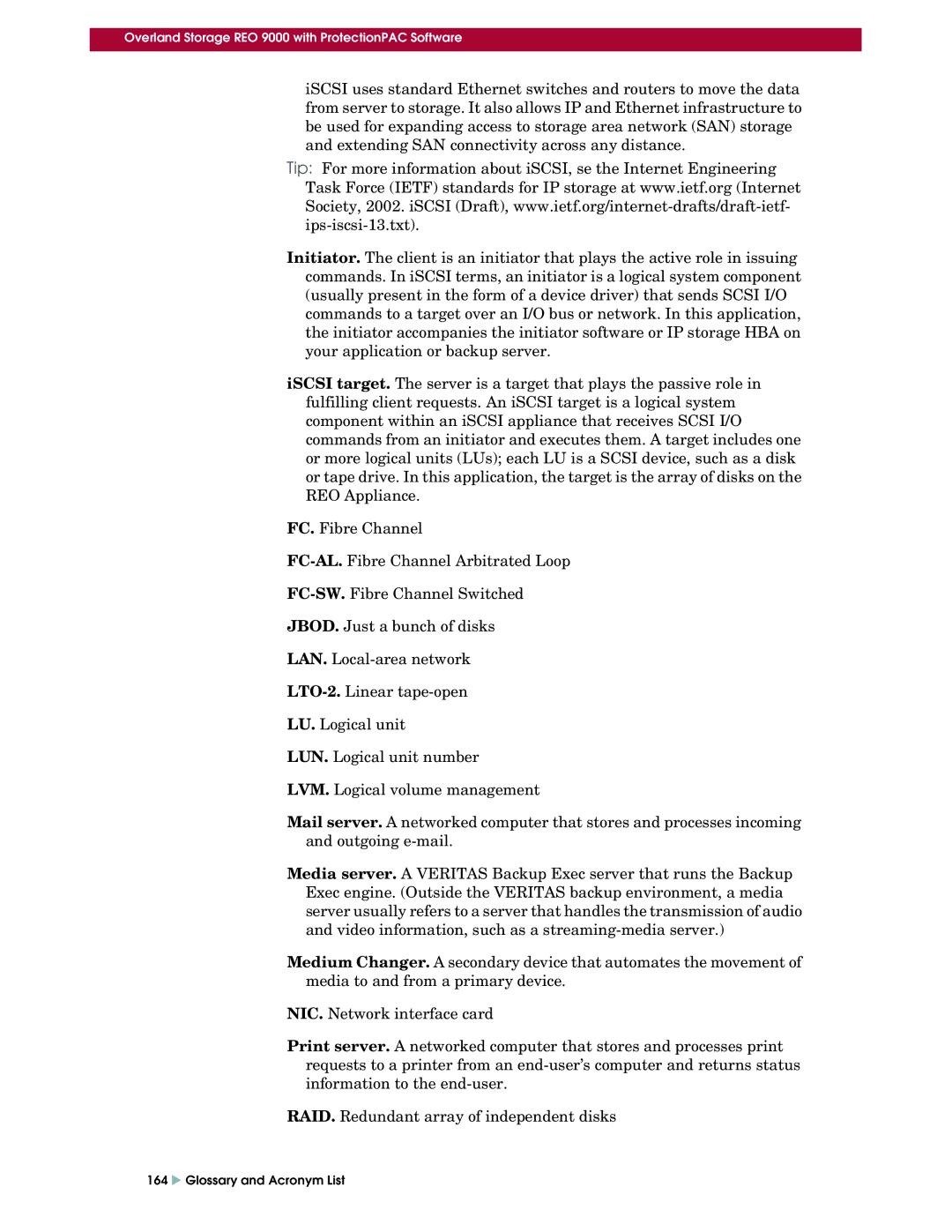Overland Storage REO 9000 with ProtectionPAC Software
iSCSI uses standard Ethernet switches and routers to move the data from server to storage. It also allows IP and Ethernet infrastructure to be used for expanding access to storage area network (SAN) storage and extending SAN connectivity across any distance.
Tip: For more information about iSCSI, se the Internet Engineering Task Force (IETF) standards for IP storage at www.ietf.org (Internet Society, 2002. iSCSI (Draft),
Initiator. The client is an initiator that plays the active role in issuing commands. In iSCSI terms, an initiator is a logical system component (usually present in the form of a device driver) that sends SCSI I/O commands to a target over an I/O bus or network. In this application, the initiator accompanies the initiator software or IP storage HBA on your application or backup server.
iSCSI target. The server is a target that plays the passive role in fulfilling client requests. An iSCSI target is a logical system component within an iSCSI appliance that receives SCSI I/O commands from an initiator and executes them. A target includes one or more logical units (LUs); each LU is a SCSI device, such as a disk or tape drive. In this application, the target is the array of disks on the REO Appliance.
FC. Fibre Channel
JBOD. Just a bunch of disks
LAN.
LU. Logical unit
LUN. Logical unit number
LVM. Logical volume management
Mail server. A networked computer that stores and processes incoming and outgoing
Media server. A VERITAS Backup Exec server that runs the Backup Exec engine. (Outside the VERITAS backup environment, a media server usually refers to a server that handles the transmission of audio and video information, such as a
Medium Changer. A secondary device that automates the movement of media to and from a primary device.
NIC. Network interface card
Print server. A networked computer that stores and processes print requests to a printer from an
RAID. Redundant array of independent disks
